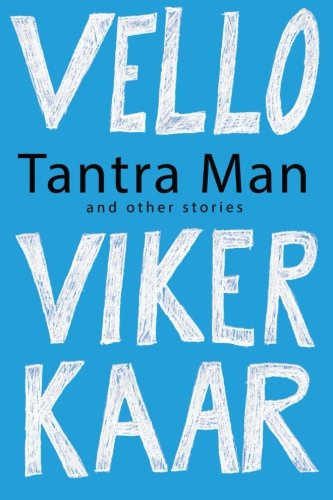I’ve often thought what would make Estonia better is another women’s magazine. Last time I was in the bookstore, I counted more than 25 titles targeted to women, everything from Cosmo and Lilit to Käsitöö to Diivan. Think about that: a magazine named sofa.
These magazines offer so much helpful counsel that I occasionally wish I were a woman. Not only would I no longer have to decide what to wear and what to do with my hair, but I’d know that it’s okay to incessantly decorate my home (Stiil), that bad sex happens (Joy), and that jealousy can actually make me a better person (Cosmo). Oh, the stress I’d be free of.
Chick mags are a relatively new phenomenon in Estonia. Just fifteen years ago if you wanted to learn about Estonian women, you actually had to ask one. A female journalist friend of mine explained Estonian women to me this way: “When you come home drunk, a Russian girl will take off your shoes and put you gently under the covers. The Estonian girl will lock you out of the bedroom.”
Why have I never seen an article about that?
Instead of bringing useful information for drunkards like me, too many Estonian women’s magazines are busy creating the type of female stereotype we absolutely don’t need—the high-heeled, gum-smacking, deaf-and-dumb babe. A friend of mine argues that if you mention any Eastern European state and “babe” in the same sentence, a westerner thinks of either “slut” or “gold-digger.” All at once, Estonians get lumped in with the girls you find on the website russianbrides.com. And what kind of girl is that? Hot, of course. But also desperate. Trapped in Tobolsk, with only one way to escape from behind the Urals.
Personally, I’m not opposed to chick mags. The magazines provide a public service by raising sensitive subjects with young readers that parents may be unable to talk about—birth control, menstruation, and masturbation, to name a few. The mags are clearly useful, but must we have so many? The longer I stand in front of a magazine rack, the more I start to believe that every Estonian woman is or aspires to be a 28-year-old pop star.
If “sexy” and “hot” are necessary to sell magazines, why can’t we have articles like “Estonia’s Ten Most Fashionable Librarians” and “Hot Prosecutors You Shouldn’t Cross”? Or perhaps a profile—titled “Can’t Sing, Can’t Dance”—of the one female parliamentarian who’s never starred in a reality show.
What I’d like is a behind-the-scenes look at real Estonian women. Do they believe Estonia lacks suitable male role models? Do they regret having children at such a young age? Do they believe Estonia has a glass ceiling? If they could remake the country, how would it look?
My journalist friends say the Estonian media world has recently turned particularly nasty. There are too many publications chasing too few readers, which causes editors (especially in the yellow press) to become mongers of hate and anger, emotions easy to impart. They give the reader someone to blame for his problems. Like I’ve given you, dear reader. You may now blame women’s magazines.
Yes, I know my country wrote the book on “sexy” and “hot” and mindless stories in stupid magazines. But Estonians are always telling me how they’re not superficial and how smart they are. But if all that’s true, why don’t you make your women’s magazines reflect it?
Of course, there’s little danger in sexy and hot unless it becomes the national pastime. Many Estonian women who I respect—and not all of them angry lesbians with an ax to grind—are convinced that the Estonian hot babe image has become the country’s calling card. These women believe that if you mention “Estonian woman” abroad, people immediately conjure the “sponsored” woman stereotype, the club crowd who spend their days in tanning salons and nights tripping on Ecstasy under a disco ball.
I’m not so sure it’s gone that far. My personal theory is that those who believe that the “babe calling card” is the national image are those who read too many women’s magazines. Still, what if they’re right? What if we’re all participants in some great Estonian Babe Conspiracy? I know I’m not immune.
I was once invited on the television show Kahvel (“Fork” in English, though hopefully brainier than its name suggests), where Kiur Aarma interviewed me along with another American journalist. We were given a list of possible topics ahead of time to help us prepare. But when the cameras rolled (a live episode) we were asked about hot Estonian babes. I suppose I should have politely directed the line of questioning elsewhere—I watch enough political TV to know answers don’t have to correspond to questions. I could have drawn him away from babes and on to any other topic. But to my everlasting shame, I answered the question: “Yes, Estonian women are beautiful.” I’ve tried to block the memory, but I believe I followed up by adding, “very beautiful.”
Of course Kiur didn’t care what I said. Nor did the viewers. I was the foreign monkey brought on TV to scratch his armpits and show that the Estonian language can indeed be learned—even by Americans. I was a talking doll. Stand me up. Pull my cord. I speak Estonian.
Since then, I’ve stayed away from television. I stick to print, where I know in advance what a fool I am. When I’m not writing, I’m reading. Sometimes I read women’s magazines—and not only as an amateur anthropologist taking society’s temperature. I read them out of a sense of hope. Hoping that Estonian women really are less superficial than their western counterparts. Hoping they really are smarter. Of course, I know the Estonian proverb about hope—“Hope is the comfort of the stupid.” But I don’t believe that any more than what I read in women’s magazines.
***
Publishing someone else's article above gives me an excuse to selfish below. Pikk jutt, sitt jutt, Kogutud lühijuttud Vello Vikerkaarelt will be in bookstores this week (Estonian language only, sorry). Some of it has been published in the Estonian press, some of it is brand new. 189 EEK (I believe) at a fine bookstore near you. Selver, too.





